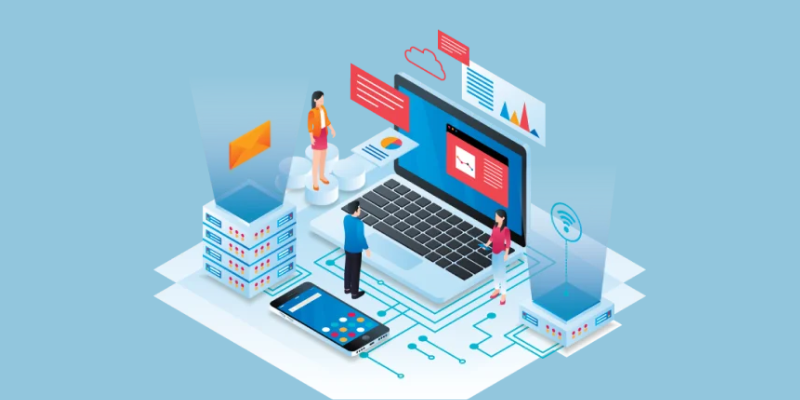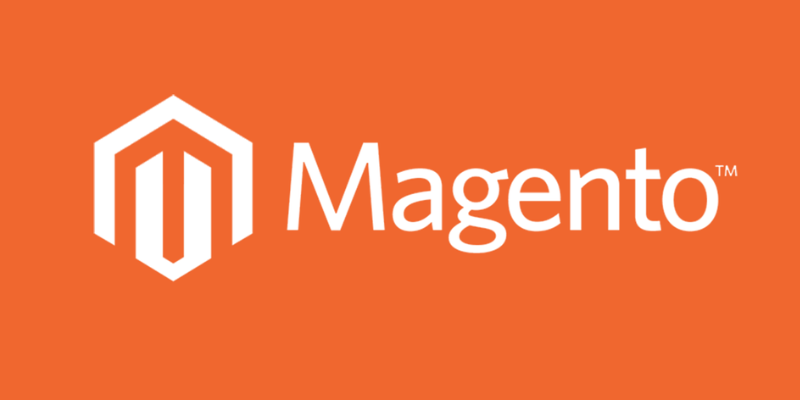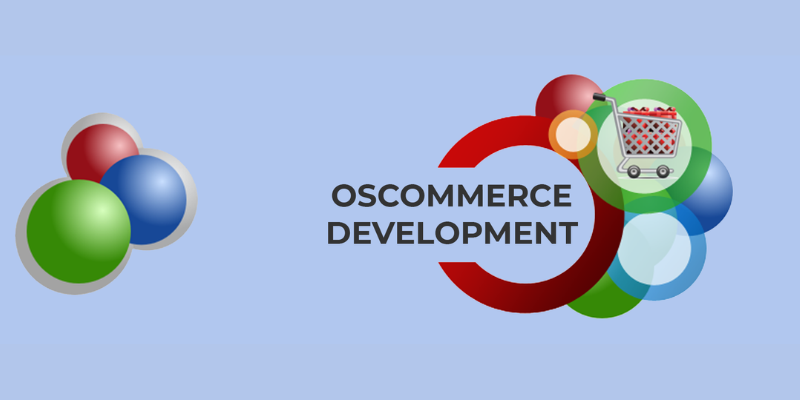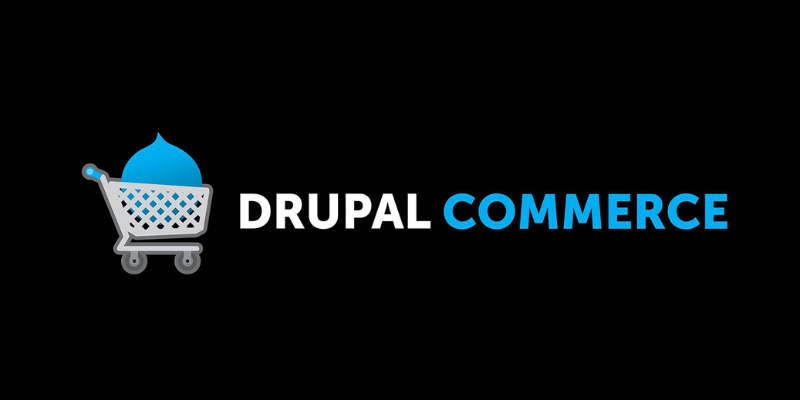The future will be dictated by technology, which is a promising growing technology. Every person is adapting to the modern world and utilizing technology daily. According to data, forty percent of people are connected via the web. 8 billion smartphones also connect to the internet. The online mode has more choices over offline options for business owners and people seeking to establish new companies.
eCommerce has revolutionized how buyers and sellers trade online in recent years. People can buy items quickly and conveniently without visiting the physical store. The online stores are accessible via any location around the globe. eCommerce websites are quickly developing to provide more discounts, flat-rate shipping, loyalty and reward programs, and various other rewards.
eCommerce development is a complicated process that needs specific equipment and frameworks. Numerous eCommerce software tools are available. Based on the particular needs of every retailer, they will decide what tools and techniques they choose to use. eCommerce is a simple process using tools that are pre-made or customized solutions developed through companies that use eCommerce development assistance.
What is eCommerce Website Development?
eCommerce website development creates an online shop where consumers can purchase items. It entails the creation of strategies and technical plans to develop the site's shopping cart products, pages for product information, help pages, and the sides of the website.
With eCommerce Website development services, customers can pick items, make orders, schedule delivery dates, and pay for their purchases all from one location, making it an all-in-one store for your business.
It's easier to envision life with internet-based shopping, so it's important to emphasize the strong foundation and value of customized eCommerce development solutions. Thanks to their adaptable options and easy-to-use processes, social media platforms are currently utilized as eCommerce websites.
Read More : An Ultimate Guide to Building an eCommerce App Like 6th Street
What exactly is the eCommerce Development stack?

It takes work to pick the best technology when you're searching to hire web developers or outsource web development. This can be particularly challenging for entrepreneurs or non-technical founders new to the business and determined to take on the marketplace. Where should they start? The best way to begin is by first gaining a basic understanding of the subject because it's the best way to go with the most common practice. What's the most effective technological stack to begin eCommerce development?
The term "technology stack" refers to various platforms, tools, and languages for programming. It's important to know technology terms and understand developers when planning to begin an eCommerce company. Now, let's examine the main elements of the eCommerce ecosystem. Next, we'll explore every layer and detail to assist you in understanding all the steps.
Let's begin the process of eCommerce website development!
It will require various technology and tools to set up an online store and run an effective online business. A business plan based on e-commerce must contain hardware and software technologies.
Web Server
A website hosting an e-commerce site requires a server for web hosting. The server is where you can store all HTML files, JavaScript, PHP, database media files, and other necessary files for the site's operation. The server runs on one of two platforms: Windows and Linux. It is not easy to run a server. Website development companies host the website through their servers or contract a hosting service to provide space on a safe server.
Server Software
The server on the web detects users visiting any website through a browser on the internet and needs specific information. It processes the request and then provides the necessary files to the customer. They are then shown to the user via the internet browser.
Several options are available for server software, including databases and file servers. Server software. Apache, as well as Windows IIS, are the most well-known web-based server software. It is possible to run server software for either virtual or physical servers.
Web Tools
A web authoring tool is an excellent option for creating an online store's front end. The tools available range from basic HTML text editors such as Notepad++ to more sophisticated graphic authoring tools along with the CMS (content management system) and comes with integrated tools for debugging and frameworks.
Dreamweaver generates HTML files and CSS (cascading stylistic sheet) to improve the look and feel of the web page. Visual Studio.net is another web authoring software for building websites with integrated databases. Web authoring tools are graphic design programs that design the user interface's skin.
Database System
A vital component of every online store is a database. Databases store data about services and products, including prices, descriptions, pictures, details, and sales. Databases also store customer details, such as purchase details, payment information, shipping and contact information, and other information.
Ensuring your site is programmed to connect to your database securely is crucial to ensure your orders are correctly processed while your business operates efficiently. PHP and MySQL serve as the channels for communication between the Database Management System (DBMS) and the website.
Networking
The TCP (transfer Control Protocols) and IP (internet protocol) define how computers connect over the internet. Also, they share data. The most commonly used protocols for TCP/IP are HTTPS, HTTPS, and FTP. These protocols allow us to access websites without being aware. File transfer protocol (file transfer protocol) can download files directly via a browser.
HTTPS (where "S" stands for secure) secure communications between browsers and servers. This includes the account details or any personal data.
As is essential in protecting online stores or shops, TLS and SSL (Transport Layer Security and Secure Sockets Layer, respectively) security protocols exist to ensure the protection and safety of websites.
Browser Compatibility
Web browsers are programs designed to let you explore and search the web and display or retrieve server-related content. In developing websites or working with agencies to launch websites online, web agencies and web developers must carefully test each browser before showing their results on different screens and in various resolutions.
The tip: Use Google Analytics to study web traffic. It is possible to see which browsers are gaining the most popularity and the ones they are using.
Ports
Ports allow one device to join with another via an IP address unique to the device. Each device has multiple ports.
Port 25 (SMTP) is typically reserved for emails. It is used to transfer emails from distant email servers. It's only possible to email if the port is open. Other port numbers that are commonly used include 80(HTTP),4,43 (4HTTPS),21 (20 FTP),22 (SSH),and 44 (3HTTPS). To tighten security, firewalls can block ports.
Domain Names
Domain names can be linked to an organization or branding. A good reputation for domain names is essential for successful online businesses. Selecting a domain name compatible with your company's name is recommended, even if you're a small company. It will allow you to get a high ranking on the search engine.
To run a successful online company, it is vital to have multiple domain names registered, such as.com and.net.
-
It ensures that your company does not get copied by competitors.
-
This summary can help you put things in order.
-
Front End HTML, CSS, and JavaScript, Ajax, and JQuery
-
Server Side Programming: PHP.
-
CMS: WordPress, Magento, OpenCart and PrestaShop
-
Database: MySQL and MSSQL
The Main Factors in Choosing eCommerce Technology
The developers of websites for E-Commerce can become overwhelmed by the variety of Frameworks, languages, and software available. This list has been compiled to help you create an e-commerce technology stack for development.
Begin with the Current Technology-Stack
Get started with the most widely utilized tools and technologies for those new to eCommerce and who need to know what tools or technologies to use. There are safe, stable, and reliable products available. Therefore, you shouldn't have to begin an entirely new technology stack. They could comprise the following tech stacks.
LAMP means Linux, Apache MySQL, and PHP. It is the most well-known technology stack used for developing websites. These could be more adaptable and slow down the progress of your e-commerce initiatives. While this can be a fantastic option, there may be better options.
MEAN means MongoDB Express, Angular, and NodeJS. This technology stack is suitable for online store creation and perfect for e-commerce development.
Python and Django are more tech stacks used extensively to support e-commerce development. This stack provides robust security to the back end of your website. Software developers commonly employ it to combine Apache with MySQL or PostgreSQL to create a web server.
.NET utilizes Windows as its operating system. The program can be adapted to Linux as well as macOS.
Define your project's details
Every project is distinct and has its materials, specifications, and demands. Consider the features you'd like to have on your eCommerce website, and then calculate your costs.
Consider Project Length
E-commerce is the perfect time to go live. The business's success depends on how quickly your product is introduced. It is essential to establish the goals of your development and set deadlines. It is crucial to determine if an MVP must be made available, whether it's worthwhile starting with the LAMP tech stack, and how many developers you would like to add to your development project.
Scalability
The ability to scale is a second factor in E-Commerce. It is crucial to think about what your plan will be for the future. It is the best way to determine the technological stack and the necessary resources to help the project.
IT Talent Available on the Market
Talents are crucial for ensuring the product's quality and reducing project costs. It is easier to locate technology experts and to develop them that are more widespread. In some cases, the talent needs to be increased, or expenses are too expensive to fulfill the demands of your business.
There's always a way to solve the problem. Consider looking beyond the markets and opt for outsourced software development. This gives you access to more skilled individuals with a wealth of experience. Outsourcing software development may cost less than creating your E-Commerce solution in-house.
Must Read : Magento Why Is it the Ideal eCommerce Platform: An in-Depth Guide
Best Technologies to Develop eCommerce Websites
Most web-based technologies provide all the functions needed to make an innovative website. This includes a wide range of payment gateways and flexible design. They also offer excellent customer service and beautiful templates and themes.
How do you choose the most appropriate web technologies for your e-commerce site?
The list below includes the most up-to-date web technologies suitable for any eCommerce site. Check it out.
Shopify

Shopify is undoubtedly one of the most well-known web technologies for hosting an e-commerce site. Shopify has proven experience in constantly developing and adding capabilities to its website.
Shopify provides a responsive checkout. The responsive checkout feature is an excellent choice for all stores because most online transactions use mobile devices. Your customers will be able to pay using BitCoins instead of conventional currency. Aren't you amazed?
Magento

Magento has proven to be the most trusted platform for e-commerce for B2B and B2C clients. Magento can be regarded as an SEO-friendly site with various customization choices. Its ability to integrate with third-party products and services makes it the most popular among users.
WooCommerce

WooCommerce is a fantastic option for setting up a simple and easy setup. WooCommerce is an online store plugin available for WordPress, allowing shop owners to sell their items rapidly and efficiently. WooCommerce plugin is employed by over 30 percent of online store owners. They not only offer their goods, however, but they also ship their products and take payment.
OsCommerce

OsCommerce is an ideal choice when you are looking to own an online shop. OsCommerce provides store owners with complete control over their online store and databases. The community has updated it with more than 7000 additional accessories. Over 280,000 service providers and store owners are available to assist in any phase of the online venture.
OsCommerce is believed to be among the platforms with the most significant open sources that are accessible.
Drupal Commerce

Drupal Commerce is technically unbeatable since it was designed entirely from scratch and was kept with the framework in mind. This enables Drupal Commerce to focus on the possibilities of building using it. Drupal Commerce is a great digital marketing and management platform that ensures that consumers and users enjoy the best experience while purchasing on the site.
Drupal Commerce is second in open-source CMS for website popularity, behind WordPress.
Volusion

Various attributes add to the appeal of Volusion, making it a prevalent option. The most notable is its intuitive interface. Volusion's shop add-on is a different size than Shopify or Shopify, so a blog installation isn't feasible. Account specialists can offer personalized service. Volusion stores utilize their mobile sites instead of a responsive layout.
Squarespace

Squarespace is the most suitable option if you're looking to design a beautiful site with a stunning, high-quality image. Their templates are gorgeous and attractive, and their online selling tools are superb. Squarespace offers customers complete control of product variations and inventory, coupon creation, shipping options, etc.
It includes all the software required to set up an online shop.
What does an eCommerce site set you back? Software for eCommerce costs
If we're discussing pricing, the process can be somewhat complicated regarding eCommerce platforms, as they are priced slightly differently than other kinds of services. There are three types of charges you could be required to pay when using the development of your eCommerce site:
-
Monthly fees: This is anything that is from nothing to a few hundred dollars and is paid straight into the website. You should expect to shell out between $30 and $ 40 for the basic plan in most eCommerce solutions listed.
-
Processing fees for payments through a payment gateway: These are the costs you have to pay each time you process the charge of a credit card. The typical fee is 2.9 percent, and an additional $0.30 can go lower with increasing volume and fees for upfront payment. A few platforms, including Wix and Shopify, use their payment processing services available to you, and others depend on Stripe, PayPal, and similar solutions.
-
Transaction charges: These are another percent-based charge that is over any fees charged by gateways. Many eCommerce websites claim to have 0 percent transaction costs, but it's just a way of saying there's nothing extra to pay. Some services will charge you a percentage of a transaction cost if you don't utilize their gateway.
We'll give a short illustration by using the Shopify pricing currently. A basic plan starts at $39 per month. Plus, you'll pay 2.9 percent plus $0.30 per payment. Additionally, there is a 2.2% transaction charge for using an alternative payment method.
If you wanted to sell 10 T-shirts at $50 each, Shopify would cost $39.90 for a monthly subscription and $1.75 per T-shirt sold. It's $56.50. However, if there were a time when you didn't make any sales on T-shirts and only paid $ 39, or if you experienced a successful month and sold 50 shirts, the price would be $126.50.
Additionally, if you were to sell 10 T-shirts but chose to go with Stripe's payment service instead, you'd be charged Shopify the sum of $49 ($39 plus $1 per T-shirt being sold) as well as Stripe $17.50 (2.9 percentage plus $0.30 per T-shirt) which is a sum of $66.50.
You can see that your monthly cost will be different according to the plan you select and the way you manage your company. It is recommended to do some calculations behind the envelope while choosing your plans and a payment processor for a quick look at what works best for your needs. I've stayed clear of web-based stores with considerable transaction costs and fees or unrealistic volume requirements. However, running a few numbers is a good idea to ensure.
Also Read : Benefits of eCommerce Development in 2024
Those responsible for the project must decide on the programming frameworks and languages they wish to integrate into the software development technology stack before developing an E-Commerce site. The tech stack is the one that determines the capabilities and plans for the development of the eCommerce solution. Businesses should take care in forming their tech stacks.
The team of software developers can assist you if you have questions about which software to develop your eCommerce site. They will assist you in choosing the best technology to create an eCommerce platform that can meet your needs today and help you achieve the future.
FAQs
1. What will be the main aspects to consider when choosing the technology to build an eCommerce website by 2024?
The most critical factors are scalability, security, speed, and mobile responsiveness. They also determine the ease of integrating with third-party services and the ability to support emerging technologies such as AI and AR.
2. Does anyone know of a particular programming framework or language that will be a standout to help eCommerce develop by 2024?
There needs to be a universal solution that works for everyone. The most popular options are JavaScript frameworks, such as React.js and Vue.js, to develop front-end applications and backend technology, including Node.js, Python with Django, and Java using Spring.
3. What is the importance of responsiveness on mobile in eCommerce website creation currently?
The responsiveness of mobile devices is essential since a substantial part of traffic to eCommerce comes via mobile devices. Picking a responsive tech stack that supports mobile-first technology is vital to keeping customers on board in 2024.
4. What is the role of new technologies such as AI and AR in eCommerce site creation?
AI-powered capabilities like personal advice, chatbots that provide customer support, and even predictive analytics can improve users' experience and increase sales. Additionally, the integration of AR for visualizing products could improve the customer experience as well as decision-making.
5. What aspects should I be aware of regarding security when designing an eCommerce site in 2024?
Protecting your eCommerce from hackers is essential due to the sensitive nature of user data and financial transactions. Make sure you choose a security-focused platform with robust capabilities, ensure that software is updated, implement encryption protocols, and adhere to industry standards, including PCI DSS for payment processing. Use software like Web Application Firewalls (WAFs) to frequently conduct security checks and tests.













Share this blog